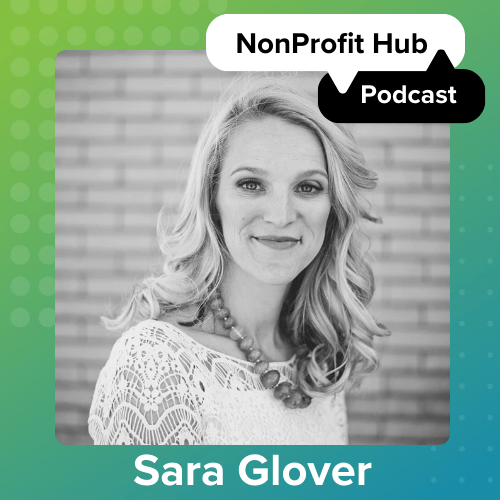You’re all sitting around the table again, your coffee making the transition from lukewarm to cold. It’s the annual fundraising plan check-in. Accountability time.
And it had been going well: you’d made progress! Going down the list…
- The bi-annual gala went pretty well, with a good return on the monetary investment that went into it. Check it off.
- You expanded your mailing list and sent out your latest advocacy mailing. Good response so far. Check.
- The capital campaign’s in its first stages and you’re moving ahead modestly. Another satisfying check.
Then 45 minutes into the meeting, you discover a trio of items down at the bottom of your list, bold like an accusation:
Online fundraising. Blogging. Social media. The black sheep of the development committee.
Ah, shoot. How’d we let those slide again this year? Everyone sighs and agrees: we’ll just have to work harder to fit them in next time.
NO! “Working harder” isn’t a good strategy. It’s just a hope (that you’ll magically have more time and willpower) masquerading as a good strategy. There’s always going to be more to do.
Going online isn’t just another set of boxes to be checked off at the end of a list of fundraising priorities.
Your digital toolbox doesn’t add new items to your plate: digital should simply make your existing plan better.
The Biggest Mistake of Goal Setting: Saying “We Should”
Many nonprofit professionals struggle with using the web to attract more donors. It seems like another chore we should do.
We should fit in ways to attract new constituents online. But who really has time to figure that online fundraising stuff out?
The language is familiar in all areas of life we try to improve ourselves. We really should hit the gym every so often. We should be watching what we eat. We should get around to learning Spanish.
But the language of “we should” loses out every time to our excuses:
- I don’t have enough time
- I don’t have enough energy
- I don’t know how
- That’s for bigger, sexier nonprofits, not people like us
Of course, then we feel bad looking at our checklist and falling short.
But that’s because we go about it all wrong.
Instead of trying to fit online fundraising into an already crowded fundraising plan as another item on your to-do list, build a fundraising plan that naturally incorporates online fundraising tactics.
Trying to fit in a new idea just because “you should” is a waste. Jump headfirst into an ambitious new goal without any strategy and it will fall to the wayside every time.
Here’s the number one rule:
Always build a system of online fundraising that works with your existing fundraising strategy.
Here are three strategies to succeed at online fundraising—instead of always leaving it for later:
1) Ask Yourself: “Where Are We Already Strong?”
Instead of trying a completely novel approach to online fundraising, identify where you’re already strong and use online communications to make that stronger.
Imagine you’re a social, outgoing person who “doesn’t have time to exercise.” But you do have time to meet with a friend for coffee two or three time a week.
The amateur would force herself to get up at 6 AM and go running alone, creating a completely new routine—then struggle every day to fit it in. But why not schedule regular time to play tennis with a friend instead of that coffee date? Why not incorporate exercise into something you already love—social dates?
The same goes with your fundraising programs. Instead of trying to create completely new online programs your organization isn’t familiar with and has no experience in, incorporate online fundraising into your existing programs.
- If you already run powerful direct mail campaigns, find opportunities to integrate your mail into a concurrent email campaign. Coordinate. Don’t separate the two programs.
- Throw a great event? Get an awesome donation page for the event that can track your progress before and after. Have participants register online and automatically prompt them to share about it on their social network. Make a video to show at the event and put it on your website. Post about event on social media.
- Really great at in-person meetings with donors? Ask your loyal donors for prospects! Ask them to share your work with their friends, and get their friends signed up on your email list. A personal referral to check out a website is way stronger than someone wandering to you by chance online.
In the case of online fundraising, always choose the path of least resistance and of greatest strength. Don’t try to completely reboot your NPO.
2) Ask Yourself: “How Can We Digitize This to Make it Stronger?”
First, locate online fundraising, social media and blogging in your existing fundraising plan. Anything digital.
Get rid of it all. Nadda, zilch. Nothing.
Ok, now go through all the other parts of your fundraising plan and plug your digital fundraising back in.
Digital should no longer be its own category. It’s part of the bigger strategy.
As you discuss your plans for each section, ask yourself: “How can we add those digital tools to make this stronger?”
Do you have a program we’re trying to fund that gets a lot of questions? A blog post addressing the major objections could make that fundraising appeal stronger. Could you then share that blog post in our direct mail? On social media as well?
What if you’re sending out a direct mail campaign and want to know in advance what phrases and ideas resonate most with your audience? Try creating a SurveyMonkey poll and emailing your loyal donors. Find out why they donated, in their own words. Incorporating those words and phrases into your direct mail will make your direct mail program stronger.
This is a way to organically use digital to intentionally strengthen your programs as they already exist. It gives you a good reason to use digital fundraising.
The worst thing you can do is just use digital media because you feel like you should.
3) Ask Yourself: “What Can We Repurpose?”
Duplicating work is the fastest way to become overwhelmed.
Remember, we aren’t adding digital to your plan, we’re making it mesh with what you’re already great at.
In other words, use the overlap to your advantage by repurposing your work:
- Repurpose your stories: if you hear or experience a great story, tweet about it! Hear an interesting fact at a conference? Post a status! Send a great direct mail appeal? Take parts and put it on your donation page!
- Repurpose your events or daily programs by recording them: use video from events, daily activities and other important occasions as content on your website later.
- Repurpose your direct mail—direct mail that goes out once and is thrown away forever? What a waste! Make that a blog post and a social media post, and the content you spent hours crafting will live forever.
- Create scripts for common emails: Do you find yourself writing the same kind of emails over and over, like after meeting with a prospective donor or requesting a visit? Why come up with a new script every time? Create a few solid ones and repurpose them.
I’m not going to belabor this point, because you’ll be able to think of your own creative ways to repurpose your nonprofit’s work.
Just make sure to always ask yourself what you can repurpose, and use it as a filter for prioritizing new projects. If you’re comparing two potential ideas, ask yourself which project can be more easily repurposed: then, always choose the option with the most repeat value.
And if you only remember one thing from this article, remember this:
“Always build a system of online fundraising that works with your EXISTING fundraising strategy.”
—









